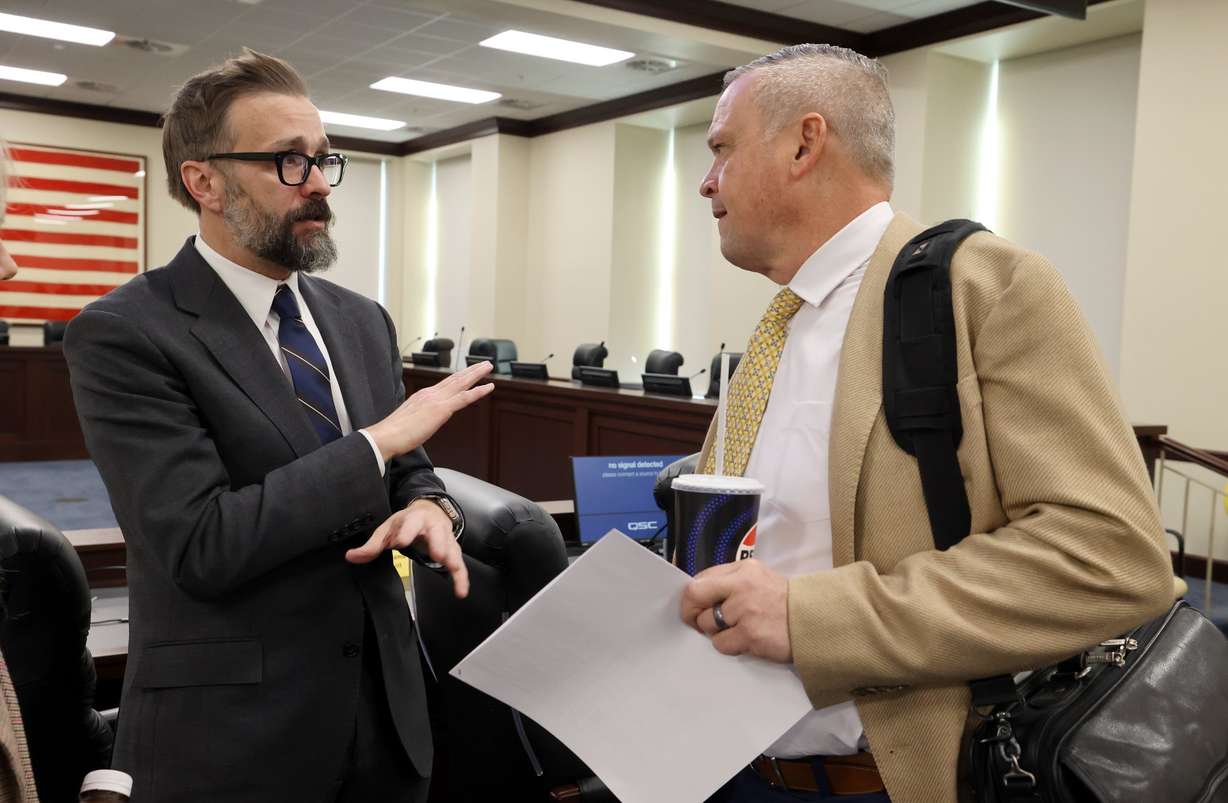Estimated read time: 5-6 minutes
SALT LAKE CITY — So what are Utah's public colleges or universities?
Are they places to acquire focused training and skills that transition directly to industry?
Are they places to develop broad perspectives and durable, flexible skills designed to serve graduates across evolving economies and workplaces?
Or both?
Those were the questions — both fundamental and philosophical — being bounced about Thursday at the Legislative Higher Education Appropriation Subcommittee meeting.
The significance of Thursday's gathering went beyond mere debates about higher education's purposes and definitions.
It marked the first opportunity for lawmakers during the 2025 Utah legislative session to engage, indirectly, with HB1 and HB265 — the so-called "Budget Cut/Reallocation" bills designed to improve resource allocation within Utah's higher education institutions.
HB1 outlines higher education appropriations.
HB265, meanwhile, calls for a system-guided criteria system to identify college programs with a high return of investment — followed by periodic assessments to ensure alignment with workforce needs, opportunities and objectives.
The Utah System of Higher Education would be charged with playing a central role in managing that criteria — working closely with institution presidents as they go through the reallocation processes and manage budget cuts.
Amanda Covington, who chairs the Utah Board of Higher Education, told the subcommittee Thursday that the state's higher education system is committed to increasing its value to students and taxpayers.
"We take that stewardship very seriously," Covington said. "We believe that ensuring a high return on investment for students and for the state of Utah is one of the most fundamental tenets of demonstrating value. So we are deploying several strategies that we can do to ensure those high returns."
Determining which degrees and certificates best align with the workforce and industry demand is central to those strategies, she added.

Utah's commissioner of higher education, Geoffrey Landward, said lawmakers and higher education leaders share similar approaches to becoming more strategic and thoughtful about investing money in higher education. "And to what that investment gives the students who are attending our institutions, the researchers who are performing their work at our institutions, and, most importantly, the state of Utah and the taxpayers who support our institutions."
The proposed process focuses on establishing criteria for directing — and in some cases reallocating — state-provided funds to ensure the optimal return of investment for students, local industry and taxpayers.
Reallocation decisions will be made by institution presidents tasked with examining their respective programs, courses and administrative expenditures, said Landward. Some programs would likely be eliminated or restructured if they are deemed low-value because of low enrollment or poor employment outcomes.
There is not one single criteria, Landward added, that is in itself determinative of decisions. Simply because a program has, say, low enrollment doesn't automatically mean that it's not a high-value program.
Lawmakers have entrusted the school presidents and the state's higher education leadership with implementing the criteria and reallocations process, said Landward.
Thursday's meeting presented lawmakers with only "the beginnings" of what the criteria/allocation process would look like. "But we wanted to show you the level of sophistication of this data-informed approach," he said.
Such data will also benefit students charting their own educational paths at a moment when the value of higher education is being questioned, both nationally and locally.

"This kind of information is critical to helping students understand that value — and to help them make informed decisions about the programs that they are enrolling in, the occupations that they are looking at, and the benefits that those decisions will make for them long term," he said.
The future of higher education in Utah will be a defining element of the 2024 legislative session. So expect to see reallocation/budget cuts to be high on the discussion list for the higher education legislative committees in the coming days.
Defending liberal education studies
Several lawmakers on Thursday expressed discomfort with the proposed reallocation process — and shared worries that traditional liberal education programs are being devalued in Utah.
Sen. John D. Johnson, R-North Ogden, said he appreciates legislative efforts to prepare students for the workforce. "But I also am a little bit concerned that we're blurring the distinction between a technical college and a university, and what makes a university different?"

Higher education, he added, helps build a better citizenry and "thinking individuals" with the skills to lead.
"We're moving into an era where AI is becoming the vehicle for the cogs in the wheel," said Johnson, an emeritus college professor. "Who's going to train the great leaders of tomorrow? Who is going to train the CEOs of these new companies? Who's going to train the innovators? When do we get back to rigor at the universities?"
Another professional educator serving on the appropriations subcommittee, Sen. Kathleen Riebe, D-Cottonwood Heights, also defended liberal arts programs that could be in jeopardy.
Jobs provide food and shelter, she said. "But our ideas connect us, and those ideas are important."

Riebe said she is disheartened by higher-ed budget cut conversations. "Our universities mean more to us than just occupational optimization and efficiency rates."
A pharmacist, Sen. Evan Vickers, R-Cedar City, acknowledged the value of high-paying, high-demand jobs such as those found in the health care industry. But he also called for balance when making decisions regarding higher education restructuring and reallocations.
Today's graduates need to be equipped with job-specific technical skills. "But let's make sure they also have some other skills that go along with that profession."










